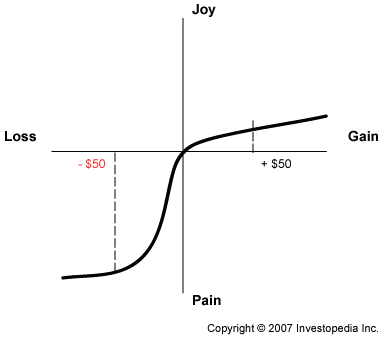Yesterday found me at a lunchtime talk by Professor Raj Echambadi of the University of Illinois College of Business. He did a short presentation on innovation within organizations, with a couple of quick case studies tossed in.
It’s of great interest to me as an investor in start ups. I also have watched certain large companies approach to innovation closely to see if they really innovate, or if they just say they innovate. Innovation is really hard to do. When you are battling corporate culture, it makes it even harder.
Raj made a great point to start. Innovation for the sake of creating something new isn’t innovation. “Innovation is commercialization of invention.” Unless you turn a profit off of it, your innovation sits on the shelf unused.
One question I had. How much money does government and corporate America throw at innovation that sits on the shelf? I bet it’s in the billions of dollars easy, maybe trillions.
In order to innovate, there are effective strategies to pursue. They can be summed up into three topics.
1. How will you create value?
2. How can you capture this value in the face of competition?
3. How will you execute the value proposition?
As a start up entrepreneur, that’s a good way not only to think about your business, but how to present to investors. Identify the problem and how you solve it. Then identify the size of the market and how you will get it.
Of course, these points are easier said than done. There is a large variance in competitive strategy. The business case the professor featured was Netflix vs Blockbuster. Netflix ($NFLX) formed and entered the at home video market. Blockbuster dominated it at the time. Did Netflix compete with them? No. They targeted non-consumption. Blockbuster already had the consumption market. Netflix created an entirely brand new market within an existing category. They understood what the customer wanted and thought about it much differently than Blockbuster. That’s how new markets are created.
Recommended
Most humans and most companies have a common heuristic. It’s called, “affinity to the status quo”. Sometimes having that loyalty helps drive efficiency in your life and in companies. However, be careful, because it can leave you with blind spots that can be fatal. Raj recommends a book, “Predictably Rational”. I will have to pick it up.
In business, companies shouldn’t just look at competitors in their own industry. They need to look outside their industry at companies they see as innovative and begin to benchmark against them. That means if you are in manufacturing, you might look at a company like Starbucks to try and glean a new way of looking at your own business. How do other companies track and measure success? If everyone looks at return on assets and tries to maximize that, is there another way? Looking at it differently might give you a new competitive strategy that allows you to create a new niche that wasn’t there.
In Netflix case, creating that new niche and growing it allowed them to blow Blockbuster out of the water. Today, their blind spot has created difficulty for them as streaming video enters the picture. No company is immune from being innovated around. Even if they get it right once. As a company, you have to make a commitment and stick with it. It has to be cultural, not a one time success. Netflix fell in love with the status quo. They were predictably rational.
We delved into a theory called Prospect Theory. It’s graphed below.
Every trader understands Prospect Theory. Your losses always feel worse than your winners, even if you lost or made the same amount. As humans, we anchor on a number and then develop perceived values based on that number. Losses weigh more heavily than gains, and it changes our risk/reward ratios. What this means in outcomes is the best innovation doesn’t always win.
To check yourself from this, ask yourself a simple question. What did the customer hire you to do? Answer that and you will be closer to your customer and you will create a product for them-not creating a product for you.
Companies fall in love with their own technology. This is called the “endowment effect”. They forget their customer. It happens more often than you realize. Even when companies say they are intensely customer focused, they really are trying to dictate to their customer in the marketplace.
Polaroid had an innovative camera. They also discovered digital photography. When George Land saw it, he asked his people, “What do we make money on?”. The answer was film. So Land never pursued the new technology because it was no use to him. Polaroid goes under, digital technology takes off. Being so product focused gave Polaroid myopia.
The other classic case of this is Xerox and personal computers. There the whole future of the internet lie. Sitting in their California lab. But, they didn’t realize it and gave the technology to Bill Gates and Steve Jobs. Even companies that are considered innovative make huge mistakes.
Another gigantic mistake companies make is using two business models within one company. They have an existing way of doing business, innovate something new and try to use a new business model to run that side of the business while running their old business. This burns working capital. It splits resources and often the culture it takes to sustain the new innovation bumps up against the old. Neither does well and businesses fail.
Commit to a strategy and go back to the all important question. Why did the customer hire you? Customers have needs and wants. Needs are permanent. You can build a company around needs. Wants are fickle. When the want fades, you better be ready to go out of business or have another innovation that meets the new want. Tracking new wants before they happen is notoriously hard.
To frame that concept in a different way, is there really a difference between a horse and buggy and a minivan? They satisfy the want of transporting your family, albeit in a different way.
Disruptive technology attacks established businesses, but in new ways that those businesses haven’t thought of or discard as inferior. If you are an established business, focusing on your core market can lead to organizational rigidity. Trying harder to extract more value out of your core market can be the problem, not the solution depending on your business.
In order to begin to think about ways to innovate, thing about looking at markets that every one else sees as non profitable or junky. If they are big enough, there might be money to be made. Target new markets within your market where there is non consumption. This is the Netflix v Blockbuster case. Then, create products that align closely with consumer needs and priorities.
There are seven steps to disruption nirvana.
1. Assume a market first perspective. Develop some market foresight. Talk to your customers.
2. Develop different structures for disruption. Cross pollinate in your business without cross contamination. Use one business strategy unless you are a behemoth like IBM.
3. Don’t be afraid to break old business models if the new innovation promises higher returns in the future. (Polaroid)
4. Question existing models. Don’t get comfortable. Only the paranoid survive.
5. Assume your first strategy is always wrong. Get it right first by listening to your customers. Iterate. You can get big later. Experiment, and have scientific measuring metrics to give you good feedback.
6. Be patient for growth. You are in it for the long haul.
7. Traditional research techniques don’t often work with disruptions. Work with lead users.
All in all I thought it was a pretty timely talk. With the way that companies can start up and innovate today, it would pay to learn a lot more about it. If you’re picking a stock for the long haul, try and discern how management views innovation. Don’t allow them to pay lip service to it. Actions speak much louder than words. If you can, talk to their customers. Their customers know more about their business than they do in a lot of cases.
























Join the conversation as a VIP Member